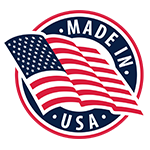How Nanotechnology Is Transforming Scrap Car Material Recovery
In today’s rapidly evolving technological landscape, nanotechnology stands out as a groundbreaking field with the potential to revolutionize various industries. One such industry is the automotive sector, particularly in the area of scrap car material recovery. With the ever-increasing number of vehicles reaching the end of their life cycle, the need for efficient and sustainable methods of recycling has never been more critical. Nanotechnology offers innovative solutions to enhance the recovery and recycling of valuable materials from scrap cars. This article delves into the transformative role of nanotechnology in scrap car material recovery and highlights its impact on the best junk car removal services providers.
The Basics of Nanotechnology
Nanotechnology involves manipulating matter at the atomic and molecular scale, typically within the range of 1 to 100 nanometers. This technology allows scientists and engineers to create materials with unique properties that are not possible at larger scales. In the context of scrap car material recovery, nanotechnology can be used to develop advanced materials, improve recycling processes, and enhance the efficiency of resource extraction.
Challenges in Traditional Scrap Car Material Recovery
Traditional methods of scrap car material recovery face several challenges. The separation of different materials, such as metals, plastics, and rubber, is often inefficient and labor-intensive. Additionally, the recycling processes for certain materials can be energy-intensive and environmentally harmful. These challenges necessitate the adoption of innovative approaches to improve the efficiency and sustainability of scrap car material recovery.
Nanotechnology Solutions for Metal Recovery
Enhancing Metal Separation
One of the primary challenges in scrap car material recovery is the efficient separation of various metals. Nanotechnology offers promising solutions in this regard. Nanomaterials, such as magnetic nanoparticles, can be used to selectively separate metals from mixed waste streams. These nanoparticles can be engineered to have specific magnetic properties, allowing them to bind to certain metals and facilitate their extraction. This technology significantly enhances the efficiency of metal separation and reduces the energy required for the process.
Improving Metal Recycling Processes
Nanotechnology also plays a crucial role in improving the recycling processes for metals. For instance, nanocatalysts can be used to enhance the efficiency of chemical reactions involved in metal recycling. These catalysts can speed up reactions, reduce energy consumption, and increase the yield of recovered metals. By incorporating nanotechnology into metal recycling processes, the best junk car removal service providers can achieve higher recovery rates and reduce the environmental impact of their operations.
Advancements in Plastic Recycling
Developing Advanced Nanocomposites
Plastic components in scrap cars pose a significant challenge for recycling due to their complex composition and varying properties. Nanotechnology offers innovative solutions to address these challenges. Researchers are developing advanced nanocomposites that combine plastics with nanoparticles to enhance their mechanical, thermal, and chemical properties. These nanocomposites can be more easily recycled and have improved performance characteristics compared to traditional plastics.
Catalytic Depolymerization
Nanotechnology also enables the development of catalytic depolymerization processes for plastic recycling. This involves breaking down complex plastic polymers into their monomer units using nanocatalysts. The resulting monomers can then be repolymerized to create new plastic materials. This approach not only improves the efficiency of plastic recycling but also reduces the need for virgin plastic production, contributing to a more sustainable recycling ecosystem.
Rubber Recovery and Recycling
Nanotechnology in Tire Recycling
Rubber, particularly from tires, is another challenging material to recycle from scrap cars. Nanotechnology offers innovative solutions for rubber recovery and recycling. For instance, researchers are developing nanomaterials that can enhance the devulcanization process, which involves breaking down the sulfur bonds in vulcanized rubber. This process allows for the recycling of rubber into new products, reducing the demand for virgin rubber and minimizing waste.
Enhanced Rubber Properties
Nanotechnology can also improve the properties of recycled rubber. By incorporating nanoparticles into recycled rubber, it is possible to enhance its mechanical strength, durability, and resistance to wear. This makes recycled rubber more suitable for various applications, such as in the manufacturing of new tires, automotive parts, and construction materials. The cash for unwanted cars in melbourne providers can leverage these advancements to increase the value and utility of recycled rubber materials.
Environmental and Economic Benefits
Reducing Environmental Impact
The integration of nanotechnology into scrap car material recovery offers significant environmental benefits. By improving the efficiency of recycling processes and reducing the need for virgin material production, nanotechnology helps to conserve natural resources and minimize waste. Additionally, the use of nanomaterials in recycling processes can reduce energy consumption and lower greenhouse gas emissions, contributing to a more sustainable recycling industry.
Economic Advantages
Nanotechnology also presents economic advantages for the scrap car material recovery industry. The enhanced efficiency and higher recovery rates achieved through nanotechnology can lead to cost savings for recycling operations. Furthermore, the development of high-value recycled materials, such as nanocomposites and advanced rubber products, can open up new revenue streams for the best junk car removal service providers. By adopting nanotechnology, these service providers can stay competitive in the evolving recycling landscape and meet the increasing demand for sustainable recycling solutions.
Case Studies and Real-World Applications
Nanotechnology in Action
Several real-world applications and case studies demonstrate the transformative potential of nanotechnology in scrap car material recovery. For instance, a research team developed a nanomaterial-based process for the selective recovery of rare earth metals from electronic waste in scrap cars. This process significantly improved the efficiency of rare earth metal extraction and reduced the environmental impact of the recycling process.
Industry Adoption
The automotive recycling industry is increasingly adopting nanotechnology to enhance material recovery. Leading recycling companies and the best junk car removal service providers are investing in research and development to integrate nanotechnology into their operations. These efforts are yielding positive results, with improved recovery rates, reduced environmental impact, and increased profitability.
Future Prospects and Challenges
Continued Research and Development
The future of nanotechnology in scrap car material recovery looks promising, with ongoing research and development efforts focused on overcoming existing challenges and unlocking new opportunities. Researchers are exploring novel nanomaterials, advanced recycling processes, and innovative applications to further enhance the efficiency and sustainability of material recovery.
Addressing Safety and Regulatory Concerns
As with any emerging technology, the adoption of nanotechnology in scrap car material recovery comes with safety and regulatory considerations. Ensuring the safe handling and disposal of nanomaterials is crucial to prevent potential environmental and health risks. Additionally, regulatory frameworks need to be established and updated to address the unique challenges and opportunities presented by nanotechnology in recycling.
Conclusion
Nanotechnology is poised to revolutionize scrap car material recovery, offering innovative solutions to enhance the efficiency, sustainability, and profitability of recycling processes. From improving metal and plastic recycling to advancing rubber recovery, nanotechnology is transforming the way materials are recovered and reused from scrap cars. The best junk car removal service providers can leverage these advancements to stay competitive in the evolving recycling landscape and contribute to a more sustainable future. As research and development in nanotechnology continue to progress, the potential for further breakthroughs in scrap car material recovery remains vast, promising a brighter and more sustainable future for the automotive recycling industry.

